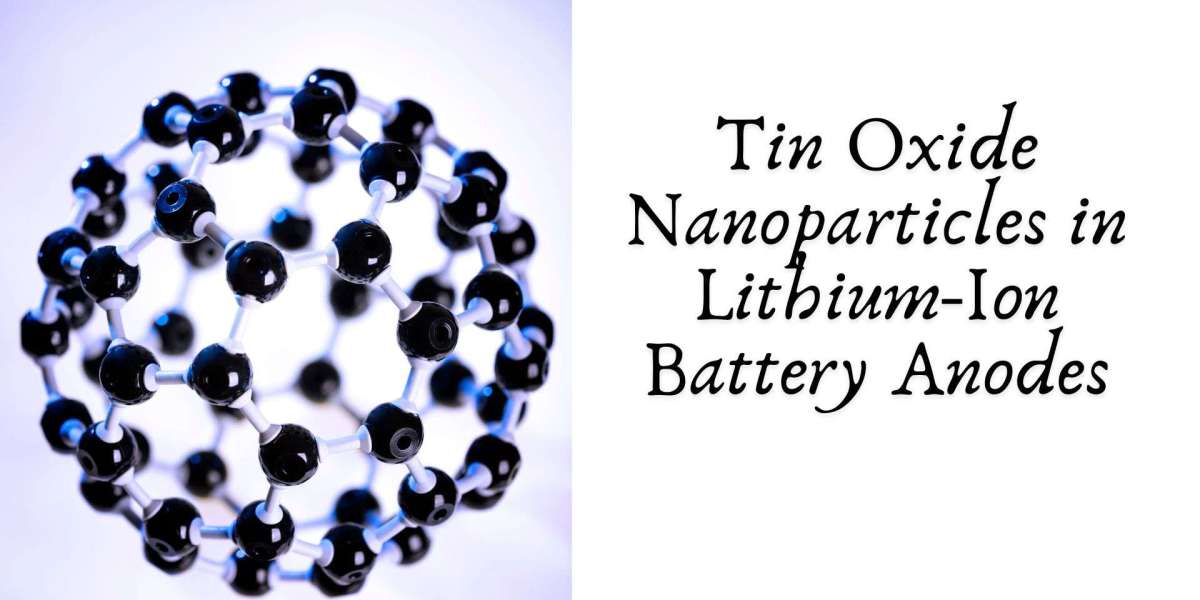Introduction
As the demand for efficient, long-lasting, and high-capacity energy storage continues to rise, lithium-ion batteries (LIBs) remain at the forefront of energy technologies powering everything from smartphones to electric vehicles. However, current LIBs—commonly utilizing graphite as the anode material—face challenges such as limited capacity and slower charge-discharge cycles. Tin oxide nanoparticles have emerged as a promising alternative anode material that offers significantly higher theoretical capacities. This article explores the role of tin oxide nanoparticles in lithium-ion battery anodes, examining their benefits, challenges, recent advances, and future prospects.
Why Tin Oxide Nanoparticles?
Tin oxide possesses several intrinsic properties that make it an attractive anode material:
- High Theoretical Capacity: Tin oxide has a theoretical capacity of approximately 782 mAh/g, more than twice that of graphite (372 mAh/g), making it ideal for high-energy applications.
- Electrochemical Activity: SnO₂ can react reversibly with lithium, contributing to both alloying and conversion reactions during charging and discharging.
- Nanoscale Benefits: When reduced to the nanoscale, SnO₂ particles exhibit enhanced lithium diffusion, better mechanical stability, and more surface area for electrochemical reactions.
Advantages of Using Tin Oxide Nanoparticles
- Improved Rate Capability: Nanoparticles provide short lithium-ion diffusion paths and high surface area, resulting in faster charge-discharge kinetics.
- Better Structural Integrity: Reduced particle size helps accommodate the volume expansion and contraction associated with lithiation and delithiation.
- Enhanced Conductivity: Modified SnO₂ nanostructures combined with conductive matrices improve electron transport pathways.
- Flexible Composite Formation: Tin oxide nanoparticles are easily integrated with carbon-based materials (graphene, carbon nanotubes, etc.) to form flexible and robust electrode composites.
Challenges and Limitations
Despite their potential, SnO₂ nanoparticles face several hurdles in practical applications:
- Volume Expansion: The repeated expansion and contraction during cycling can cause cracking, pulverization, and loss of electrical contact.
- Poor Initial Coulombic Efficiency (ICE): The formation of irreversible Li₂O during the first few cycles results in capacity loss.
- Low Electronic Conductivity: Pure SnO₂ has limited electronic conductivity, necessitating conductive additives.
- Agglomeration Issues: Nanoparticles tend to cluster, which reduces their effectiveness and creates inconsistencies in performance.
Strategies to Overcome Challenges
- Carbon Coating and Composites: Coating SnO₂ with carbon or embedding it into a carbon matrix can buffer volume changes and enhance conductivity.
- Hollow and Core-Shell Structures: These nanostructures provide extra space to accommodate volume expansion, thereby improving cycling stability.
- Doping with Metal Ions: Introducing other metals (e.g., Fe, Ni, Co) can enhance structural integrity and electronic properties.
- 3D Nanostructured Electrodes: Building hierarchical or porous SnO₂ architectures improves mechanical resilience and electrolyte accessibility.
Recent Research Highlights
Recent studies have shown promising improvements in SnO₂-based anodes:
- Graphene-SnO₂ Nanocomposites: These composites demonstrate excellent cycling performance with capacities exceeding 700 mAh/g after 100 cycles.
- Yolk-Shell SnO₂@C Structures: Featuring a void between the core and shell, these nanostructures accommodate volume changes and maintain integrity.
- SnO₂ Quantum Dots in Carbon Matrices: Ultra-small SnO₂ particles embedded in flexible matrices show enhanced cycle life and stability.
Applications and Industry Interest
The potential of SnO₂ nanoparticles in LIBs has attracted the attention of industries focused on:
- Electric Vehicles (EVs): Higher capacity and faster charging make them suitable for next-gen EV batteries.
- Portable Electronics: Smartphones and laptops benefit from extended battery life and quicker recharge times.
- Grid Storage: Long-lasting and efficient energy storage solutions are key for renewable integration.
Future Outlook
As research progresses, the incorporation of tin oxide nanoparticles in lithium-ion batteries is expected to become more commercially viable. Key focus areas include:
- Scalable Synthesis Methods: Developing cost-effective, environmentally friendly synthesis routes.
- Hybrid Electrode Design: Integrating multiple materials to balance capacity, stability, and conductivity.
- Solid-State Battery Compatibility: Exploring compatibility with next-generation solid-state electrolytes.
With continued innovation, tin oxide nanoparticle-based anodes could soon replace conventional graphite anodes in several high-performance applications, revolutionizing the energy storage landscape.
Conclusion
Tin oxide nanoparticles represent a transformative solution in the quest for better lithium-ion battery performance. Their exceptional capacity and favorable electrochemical properties make them a prime candidate for future anode materials. While challenges like volume expansion and low conductivity persist, advanced nanostructuring and composite strategies have brought us closer to realizing their full potential. As researchers and manufacturers refine these approaches, SnO₂ nanoparticles may become the cornerstone of next-generation high-capacity, long-life, and fast-charging batteries.



